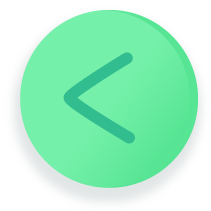

#IHEART RADIOAPP BACK BUTTON DOWNLOAD#
The producer can then download the audio file like an MP3, edit what they want to use, and air it minutes later.

The audio that is recorded is sent to us on the back end. It gives the show the same local presence without the awkwardness of bad calls or the fear of someone going off-topic or better yet dropping a 4-letter word that the FCC wouldn’t approve of.

I truly believe that this can perfectly supplement the radio caller. Rather, I am giving feedback on the feature as a host who is greatly benefiting from it so far.
#IHEART RADIOAPP BACK BUTTON FULL#
Now, for full disclosure, I am an iHeart employee so to be crystal clear, this is not a fluff piece where I’m trying to earn brownie points from the corporate office. Voice recording is instantly sent to the station!.Select “ Try again” and repeat step 2, or select “ Send”.Tap the microphone button and record a voice message up to 30 seconds ( First-time users may be required to grant microphone access).Navigate to a participating Live Station.“An innovative way to have your voice heard! Engage with your favorite on-air hosts and DJs in on-air conversations by tapping, recording, and sending your voice directly from within the iHeart app for iOS and Android.” Here is how iHeart describes this feature on their website: Louis, it was called “Mic Drop.” Either way, pretty cool idea, right? When Hubbard first rolled this out at 101 ESPN in St. IHeartMedia’s iHeartRadio app now has a feature called “Talkback” where you can press a little microphone icon that rests right next to the play button for streaming live audio, this button allows any listener to record a thirty-second memo that is sent to the radio station they are listening to in an instant. So, what’s the answer if you still want to hear from listeners? Well, Hubbard Radio figured out one option a while back and now iHeart is about to take the practice nationwide. Sure, there are bigger markets that are able to staff the 3rd man or woman in the room that can chime in from time to time, help with production, help with social, and answer calls! But, we are not all so lucky. Hosts are producers, producers are co-hosts, and frankly, we’re running out of hands in local radio. It’s more difficult than ever to consistently take phone calls for a lot of radio shows around the country. The elephant in the room is, of course, staffing. Calling a radio show live is a lot of pressure, so the ones that don’t do it often are doing it less and the ones who do it all the time get past the phone screener far too often. And let’s face it, for many listeners, the idea of calling in to voice your opinion is inconvenient time-wise and kind of intimidating. With the rise in so many other convenient lines of communication, a good number of listeners are opting for the instant gratification of being able to tag their favorite hosts on social and tell them what they’re thinking. Now, we have social media, text lines, and all sorts of ways to connect.

There was a time not too long ago when the only way to truly engage with listeners and get a live reaction on what they’re feeling about the news of the day was to call the station. It’s the best hosts that find a way to exploit the dynamics of audience engagement that set themselves up for long-term success. However, the deep connection we can make with our audience is what sets us apart from nationally syndicated shows and static/dry local shows. void onBackPressed() ).setNegativeButton("NO", new DialogInterface.If you’ve worked in the local sports talk radio scene for any length of time you’ve at some point thought “how can I better involve my audience?”.Īnyone can book guests, we all develop topics, and those things are certainly important. So if you want to show a dialog when a user presses the back button after having types something in the EditText- then you need to the onBackPressed method in your Activity class. Your initial question was not very clear on what you wanted to do.


 0 kommentar(er)
0 kommentar(er)
